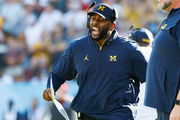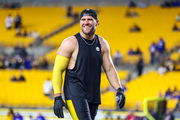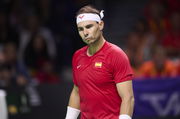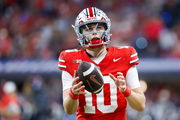

While one is riding a horse in competitive equestrian events, protective gear is a must. Competitive events represent a lot of situations that can lead to serious, even fatal injuries. Therefore, all jockeys are required to follow a code of dressing safely, only then can they be allowed to participate in equestrian events. The organizations that preside over the competitions have a specific standard that needs to be met for the equipment to be considered safe.
Watch What’s Trending Now!
To ensure the safety of all the stakeholders involved, the organizations keep updating their requirements with the progress in technology and to cover new risks. Recently, the US Equestrian Board of Directors made a similar move after they approved an amendment that will change the safety standards that measure the viability of protective headgear used in competitive equestrian events. The move is expected to reduce the number of horrific accidents that can prove dangerous to the lives of riders.
ADVERTISEMENT
US Equestrian approves additional testing standards for protective headgear
On July 24, 2023, the organization passed an amendment to add certain standards of testing for headgear. The rules were originally approved in the Mid-Year Board meeting held in June. Now, after the current amendment, the rules governing the specifications of the helmets will change. The new rules will be effective from August 1, 2023. Earlier, the rules were to be implemented from December 2023. However, to give an advantage to the equestrian competitors, the organization decided to move the date earlier.

Imago
October 31, 2021: Giant Game, entered in the TVG Breeders’ Cup Juvenile and trained by Dale L. Romans, exercises during the morning training session for Breeders’ Cup 2021 on October 31, 2021 at Del Mar Thoroughbred Club in Del Mar, California. Jon Durr/Eclipse Sportswire/Breeders Cup
The amendment has led to an expansion in the list of acceptable international testing standards for equestrian protective headgear. This means that the USEF-licensed competitors will now have a better range of options when it comes to protective headgear than they did before. Dr. Stephanie Bonin, who works in helmet safety, said, “The additional testing standards are comparable to or exceed the ASTM F1163/SEI standard and will allow more helmet options to competitors at USEF national competitions.” She is the Principal and Senior Biomechanical Engineer at MEA Forensic Engineers & Scientists and Chair of the ASTM Equestrian Helmet Task Group.
ADVERTISEMENT
Top Stories
Forced to Leave FOX, Cowboys Legend Troy Aikman Says ESPN Is Like ‘U.S. Government’ & Clearly Distinguishes the Two Networks

NFL Files Motion to Dismiss Former Texans Board Member Cary McNair’s “Legally Baseless” Lawsuit

$250M Michigan Booster Reveals More to Sherrone Moore Saga After Paige Shiver Confirms Police Visit

T.J. Watt’s Wife Shares Emotional Update on Steelers LB Following Worrying Health Scare

Rafael Nadal Faces New Injury Blow Only a Year After His Emotional Tennis Exit

Heisman Voter Flags Julian Sayin Disrespect as Fernando Mendoza and Diego Pavia Announce True Intentions

To ensure that all concerns for the safety of the riders are effectively distinguished, this step has been taken as an emergency measure by the organization. According to a press release by the USEF, they have tried to ensure that the change in the rules is not hampered by the lengthy process of amending the rule book. Therefore, the USEF has simply posted the new rules on its website to make them effective immediately. This is a welcome move, considering the fact that statistics reveal the dangers of not having a helmet in equestrian sports to be near fatal.
ADVERTISEMENT
Prevention is better than cure
According to a report posted by the University of Connecticut, equestrian sports pose a higher injury rate per hour of exposure than many other dangerous sports. Moreover, out of all the horse deaths, reports by medical examiners suggest that head injuries during horse riding are what result in more than 60% of these deaths. But how will the new change bring these fatalities down?
ADVERTISEMENT

The report also revealed that the new ASTM/SEI-approved helmet specifications that have been added by the amendment are considered to reduce overall head injuries by 30% and severe head injuries by 50%. According to the report, helmets that do not meet any specifications are, in fact, not useful for preventing head injuries. Therefore, the addition of these specifications will lead to a holistic reduction in head injuries, thus ensuring better protection of competitors during equestrian events.
ADVERTISEMENT
Watch This Story: Countdown of the Top 5 Moments That Can Set the Equestrian Crowd Ablaze
ADVERTISEMENT
ADVERTISEMENT
ADVERTISEMENT

